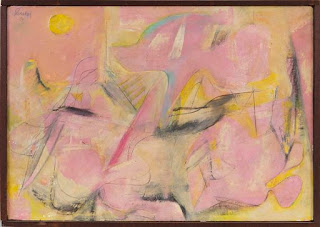 |
OBLIGATORY TENUOUSLY-RELATED
IMAGE AND CAPTION: Boilerplate should
never be anything but a creepy, late-Victorian,
steampunkish, fictional robot in your life— it
has NO PLACE in your bio!
|
Via
Ted Gioia on Twitter, here's a good piece from NPR
on artist bios, by classical writer Anastasia Tsioulcas. Basically, artist bios suck, and they tell the reader nothing about who the person is as an artist:
Paragraph 1: six quotes praising their brilliance from major American critics, crammed together then lightly glazed with enough subjects and verbs to form sentences.
Paragraph 2: a list of their awards and international venues where they've played.
Paragraph 3: a long list of composers who have written for them (most of whom very few people would be familiar with, unless the reader were also a composer or performer).
Paragraph 4: a list of academic institutions they've worked with.
Paragraph 5: a list of other performers they've played with.
Snooze.
Jazz musicians are particularly egregious with this—
who I played with is the bulk of a lot of bios. If somebody ever got near a stage holding an instrument while somebody famous was present— in a clinic, at a jam session, whatever— into the
played with list it goes. Paraphrasing something my brother once said,
Right, they played with Herbie Hancock for one concert when there was no budget for him to bring in his own players, Herbie didn't dig it, and that was the end of it.
This is an American thing, incidentally— everyone thinks the arts are a joke, including the artists, so they fall into this thing of proving they're serious by just listing all the serious things they've done.
Tsioulcas continues:
[T]his is an opportunity to shape one's personal brand. In my experience, classical artists often pride themselves on not having to debase themselves for the sake of commerce. Maybe that's part and parcel of existing so far outside the musical mainstream. But what such artists fail to recognize, in my opinion, is that this can be not just a marketing exercise but a chance for a bit of self-reflection. What makes what you do — and what you want to express — meaningful?
To be more blunt: Why should we listen to you, whether you're an international soloist or still in school? Think of this as a chance to craft a compelling narrative in a truncated form. Who was your inspiration? Who was your teacher? What other music do you listen to, aside from your own repertoire?
It's difficult for musicians to say why people should listen to us, not least because we're not confident that people
should listen to us, having had feelings of unworthiness pounded into us in our early careers. And we just deal in an abstract medium, and we're generally unclear about its value, and of our value as individual players to our consumers— writers, radio people, venue bookers, and the public.
It's not actually a real productive way of thinking about it:
Oh my God, why should
they listen to me? I don't know!!! God, I suck!!! Instead, maybe tell them what you
are, and let them assume you're good. Figure out your
high concept— the three or four general things that you're about. Thinking of Bill Frisell, you think:
Americana, Hendrix, avant-garde noise, composer. Thinking of Don Pullen, you think
deep blues, classical chops, tone clusters. Thinking of Paul Motian, you think
primitivism, simple tunes, heavy swinging groove. If you can't come up with a compelling similar description of your own work, you might need to dig a little deeper in making something special out of yourself. “Just another pretty good modern jazz drummer who plays pretty good because college has figured out how to make people play pretty good” is not good enough.
I got away from listing influences some years ago, after seeing a comic strip in an alternative paper with an illustration showing a lot of 90s hipsters walking around thinking “My main influences are Sonic Youth and Pavement.” It rather indicates an amateur mindset— if you don't already have a reputation, or if you're not real good writer, I think it can sink you with a skeptical reader. If you've made an exceptionally serious study of someone in particular, or are his protégé, go ahead and say it. Same with inspiration— it's a sappy word, and you have to handle it carefully.
None of this is real easy. You can screw up in all sorts of horrible ways:
- It can take years to figure out who you are, and to figure out that who you are is more interesting than who you think you should be— like, don't pretend you're a some kind of thrilling hard-core New Yorker with deep jazz roots, when you're really from a fracking town in North Dakota. A noise artist from a fracking town is actually a lot more interesting. From NY? Whoopdedoo, dog bites man, WGAS? From ND? What, wow, really? That is so WEIRD! I want to hear that!
- You want to have a story, but you also don't want to tortuously act like there's a story where there is no story.
- Emotional appeals and hyperbole have a tone of pleading, and are best avoided— let it be assumed that you are sincere, and are emotionally invested in your work.
- Also avoid myth making: Then in 2007 Cory got his first copy of Stick Control and his universe exploded like God Himself rode a hydrogen bomb onto Cory's mom's house, and he realized that being a drummer was indeed his true calling— Cory, I mean, not God... yeah. No.
So there. We have a big mess of stuff to think about. Time to get out our copies of
Strunk and White, and get cracking. And don't go looking at my bio for examples of not doing the things I'm telling you not to do.
























